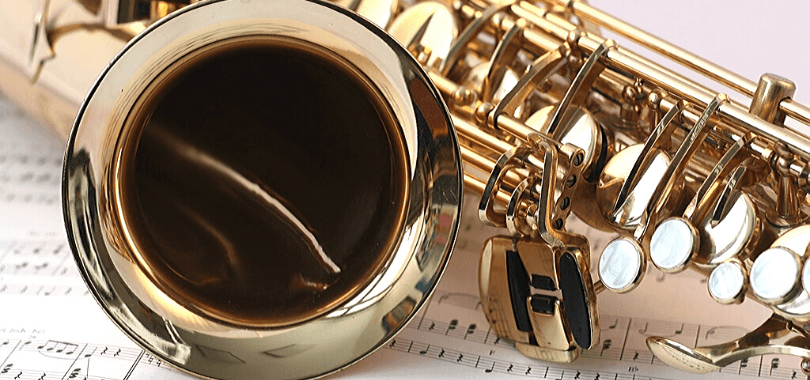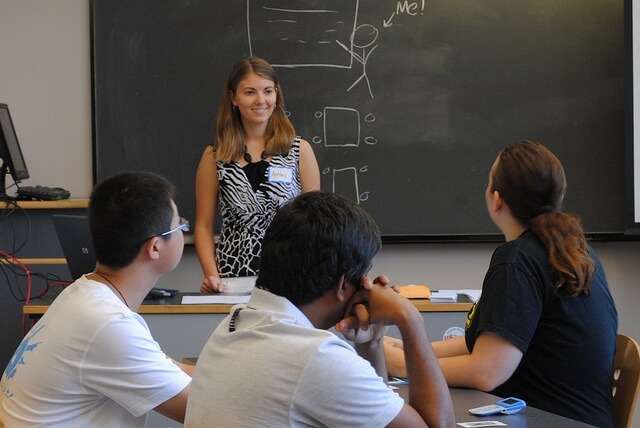There has long been an ongoing debate about the validity of fine arts education within schools. Some think that they are frivolous in comparison to the Common Core and STEM-focused subjects, others argue the fine arts are intrinsically valuable to both education and life.
The fact of the matter—and yes, we can indeed say fact as the many benefits of arts education has been thoroughly researched—is that the arts can teach life skills, inspire students, and allow them to experience the world in a different way.
Read on to discover some of the many benefits of arts education!
The Arts Teach a Number of Valuable Skills
Creativity
Often the first skill people think of when they hear the word “art” is creativity. It is an incredibly important thing to foster and hone, as people apply creativity to just about every aspect of life— problem-solving, everyday writing, projects (business or otherwise), etc.

Diligence
Painters will tell you that practice makes perfect. So will musicians, writers, actors, and just about any type of artist out there. To get better, one must be persistent in their craft. Students in band will practice just about every day—oftentimes before school, during, and after on their own. Learning to have this diligence early on will leave a lasting impression on the student, who can take their hard-earned diligence and apply it to other parts of their life.
Patience
Photographers must have a perfect sense of timing and might have to wait quite a while for the perfect shot. A flute player trying to master a difficult section of a piece will have to have patience with themselves if they make mistakes. In order to get better at any skill—artistic or otherwise—a lot of time and effort will have to be put into it. Nobody becomes a Michelangelo overnight.
Expression
There’s no doubt that the teenage years can be difficult and tumultuous. Instead of rebelling in potentially harmful ways, teens introduced to various arts express themselves in a positive way through a creative outlet.
Teamwork
Many different forms of fine arts require more than one participant. Band/Orchestra, choir, drama, and film are team efforts, and so students can learn the value of working with others and understanding their contribution to the bigger whole. Marching band, for example, requires students to master their placements—if one person is off, the entire picture is jeopardized. This emphasizes the importance of the individual within the larger organization. It’s a skill and mindset that will be vital down the road.
Experience Culture(s)
Study different forms of art from around the world
Many choirs perform pieces of music from different time periods and different countries, breeding an interest and appreciation for other cultures. The same goes for visual art; students in art class will study famous artwork from painters around the world—like Pablo Picasso or Frida Kahlo. This will give them a new perspective and make them more worldly.
See how art affects and reflects the world around it
Art is a product of humanity, and thus it is used and celebrated in a variety of ways. It can create movements or styles that inspire fellow artists in every medium—music, visual art, architecture, etc—such as the Baroque period.
However, art is also a reflection of the current world. It can be used to make a statement on social commentary—like modern performance art pieces. It can be a snapshot of a different time, a window into what life was like back then in that place. Once again, these can lead to having a different perspective. It also teaches critical thinking skills.
Appreciation for diversity
The world is a big place filled with fascinating people from all walks of life. An appreciation of the arts can lead to an appreciation of those different peoples and cultures. This can aid students in working with people unlike them in the future and showing respect to everyone they meet, regardless of differences or similarities.
Scientifically-Proven Benefits
There is no shortage of scientific studies that highlight the importance of the arts in education. For this post, we’ll focus on one conglomerate study—Champions of Change: the Impact of the Arts on Learning (Fiske, 1999) which featured a number of different scientific teams looking at various aspects of the impact of art.
- Higher student attendance and lower dropout rates.
- Fewer fights, greater understanding of diversity, and greater peer support.
- The arts provide challenges to students of all levels—from beginner to expert.
- Students learn to become engaged and self-educating. Instead of just regurgitating facts, they actively seek new information.
- 21% of students of low socioeconomic status who had studied music scored higher in math versus just 11% of those who had not. By senior year, these figures grew to 33% and 16%.
There are, of course, many other benefits to a fine arts education—far too many to list here! It is a vital part of the school system and must be appreciated, not set aside. If you’re signing up for classes, try to include band or choir or visual arts. If you don’t have time in your busy schedule, try joining an art club at your school!
—
Use College Raptor’s free match tool to discover individualized college matches, personalized net price estimates, acceptance odds, and potential financial aid at schools around the country.







My daughter is 4 years old, and she loves to draw. I love your idea when you said that being creative is an important thing to foster and hone, as it can be applied to just about every aspect of life. I want my child to develop her drawing and painting skills further. I will consider enrolling her to art training and lessons this year. Thanks for your inspiring article.
I have a sister that is thinking about getting more involved in performance arts. She wants to make sure that she is doing what she needs to be doing. It might help her to know that she be more academically challenged with this training.
I love how you talked about being able to learn about different cultures from all around the world without ever having to leave the comfort of the classroom as you learn about various artists in different fields like painting, sculpting, and music. Art is also said to be a reflection of the world today, as well as a silent social commentary of the various concerns that are happening all over the world today. If I were given the chance to attend art classes, I would definitely love learning about the various histories that come along with famous works of art and how they came into existence.
AWESOME I LOVE BAND
awesome